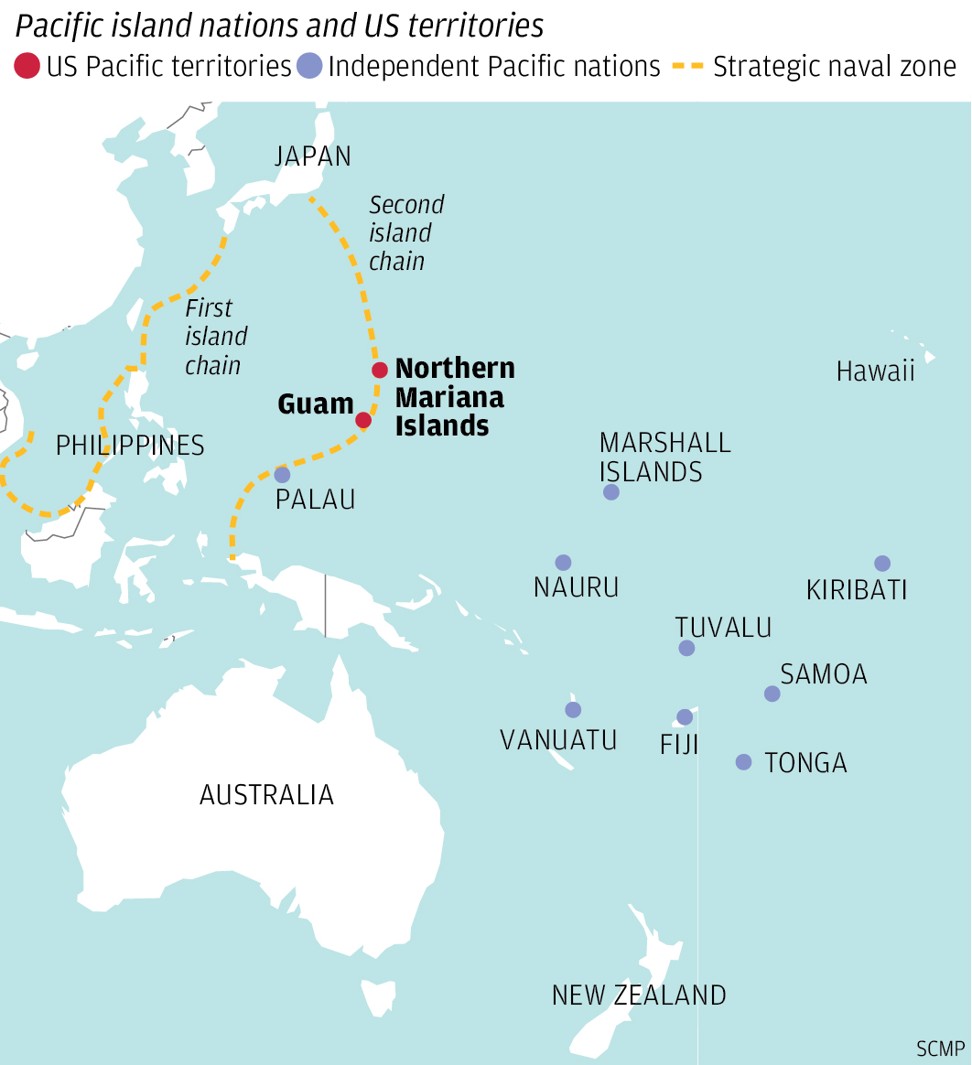
China is becoming an Atlantic sea power, says US military analyst
- Report says shift in naval operations reflects growing presence and investment in southern Africa
- Moves could also be part of Beijing’s plans for blue-water force to rival US Navy
China is becoming an Atlantic naval power, venturing into the ocean’s southern waters as it steps up investment in the region and counters perceived threats from the United States, according to a report in a security journal.
The assessment, written by Ryan Martinson, an assistant professor at the US Naval War College in Rhode Island, said that in the last five years China’s presence outside of Asia had expanded from anti-piracy operations and port visits to training and setting up a military port at Doraleh in Djibouti on the Horn of Africa, close to the Gulf of Aden, Red Sea and Persian Gulf.
“Once limited to port visits and largely symbolic joint exercises, PLAN [People’s Liberation Army Navy] activities in the South Atlantic now include independent operations and training,” Martinson said in the report, published on Monday in the journal of the Royal United Services Institute, a British military think tank.
“It has also shown early efforts to develop mastery of the ocean battlespace environment in key areas of the South Atlantic.”
It said the Chinese naval presence had become more sophisticated, with longer missions. In one case, a PLAN task force spent 24 days in the Atlantic before putting in at Cape Town, South Africa, in August 2017. In another, a PLAN task force spent 13 days sailing from Douala port in Cameroon to Cape Town, longer than a typical voyage.
In these instances, Chinese forces were training and doing drills, including staging missile attack simulations, the report said. Research vessels were also part of the operations.
“Much of the data Chinese scientists collect is dual-use and [was] likely [to be] shared with counterparts in the military,” the report said.
How the tiny African nation of Djibouti became the linchpin in China’s belt and road plan
After analysing the patterns of PLAN port calls in West Africa, Martinson found Cape Town, on South Africa’s southwest coast, was its favoured stop, with vessels calling there at least six times between June 2014 and June 2018.
The report suggested that the naval activity increased as part of the drive to protect China’s overseas interests.
According to 2017 commerce ministry statistics quoted in the report, of the five African countries with the greatest direct investment from China, four – South Africa, Congo, Nigeria and Angola – faced the South Atlantic.

But the report also said the increased PLAN presence in the South Atlantic could reflect a shift in China’s strategy for handling the great power competition in East Asia.
“Chinese deployment of naval power beyond maritime East Asia likely reflects Beijing’s incorporation of certain elements of an ‘exterior’ strategy into its overall approach for coping with the US threat,” it said.
“By developing robust naval capabilities abroad, the logic goes, China might compel the US to adjust its force posture, shifting air and sea assets away from the western Pacific to account for Chinese threats elsewhere.”
Expansion in the South Atlantic came as China made its larger presence in the Pacific and Indian oceans felt.
China, Russia and South Africa team up for first joint naval drill
The Chinese navy regularised training beyond the first island chain, a barrier of archipelagos separating the China seas from the Pacific, in 2007. It also moved west into the Indian Ocean in late 2008.
Charlie Lyons Jones, a researcher from the Australian Strategic Policy Institute’s defence and strategy programme, said the Chinese navy’s operations in the South Atlantic indicated that China was trying to gain the experience and ability required for sustaining a blue-water force like the US Navy.
“However, while China has a military base in Djibouti, the PLAN probably lacks the basing infrastructure and logistics enablers needed for successfully operating in the South Atlantic during a high-intensity conflict with a peer-adversary such as the United States Navy,” Jones said.
“Fleet air defence, anti-submarine warfare and logistical support tailored for blue-water operations would be likely vulnerabilities for the PLAN while operating in the South Atlantic. However, these are creases that Beijing is probably trying to iron out.”
China has increasingly stressed the importance of sea power as it continued to flex its military and economic muscles.
In a defence white paper last month, the first released in years, Beijing highlighted the need for “combat readiness and military training in real combat conditions” and its new war-fighting capabilities in the western Pacific and South China Sea.


